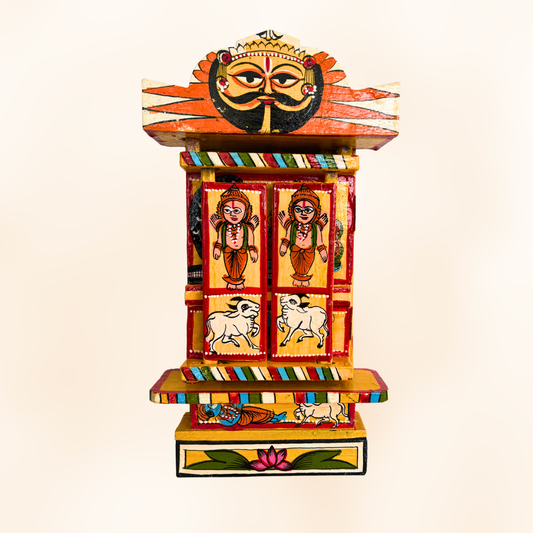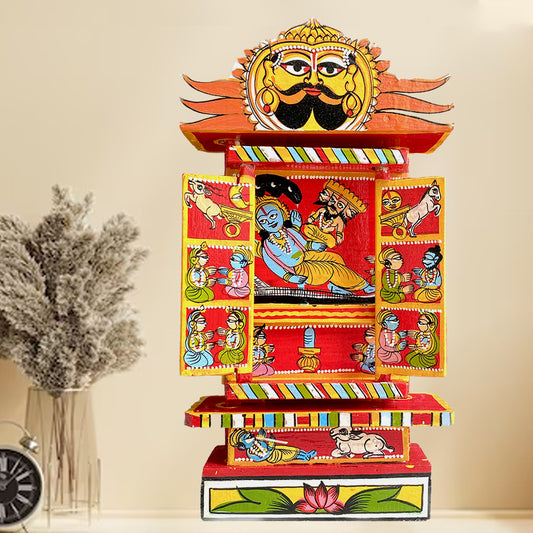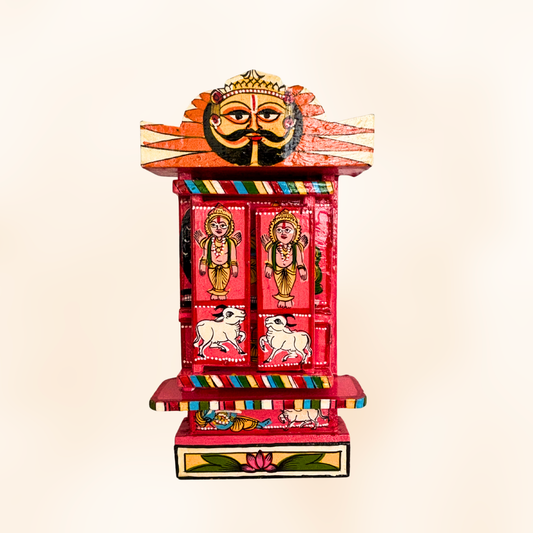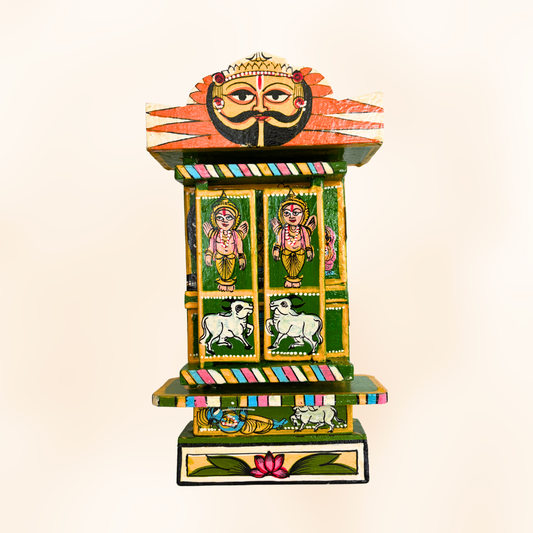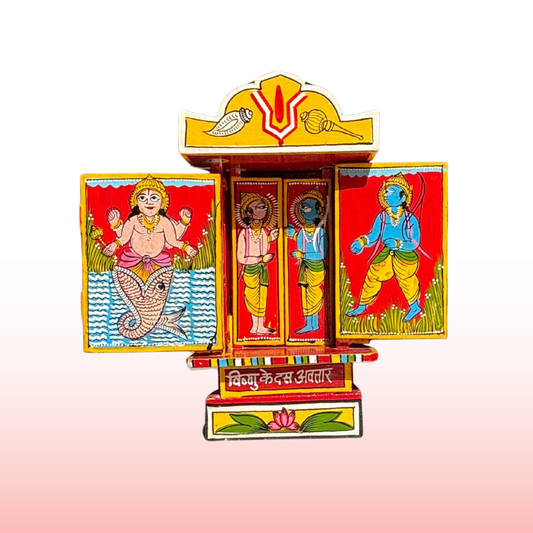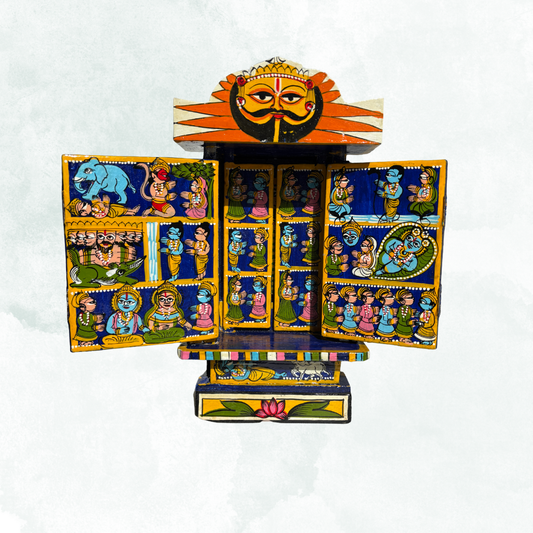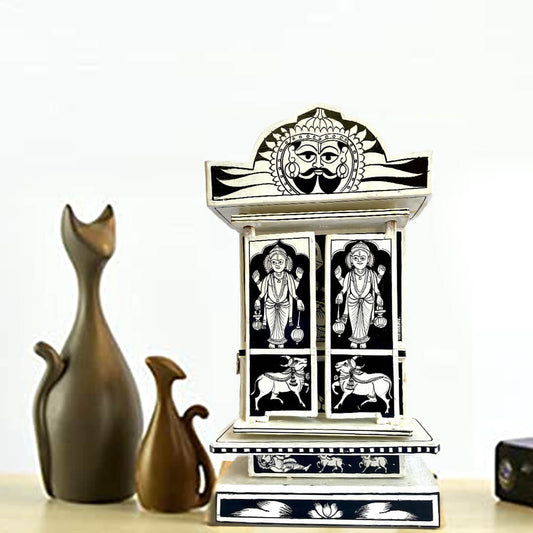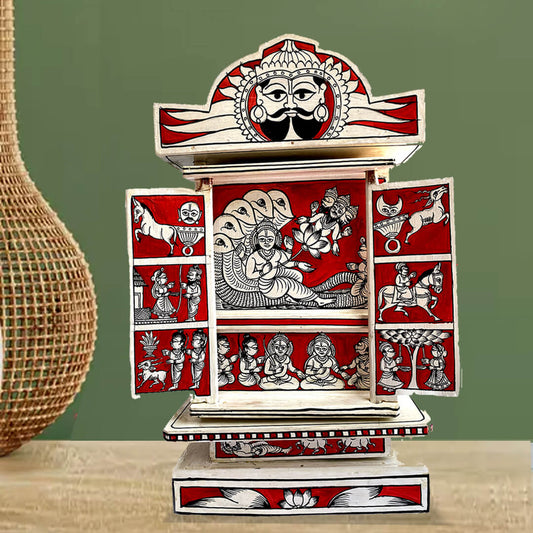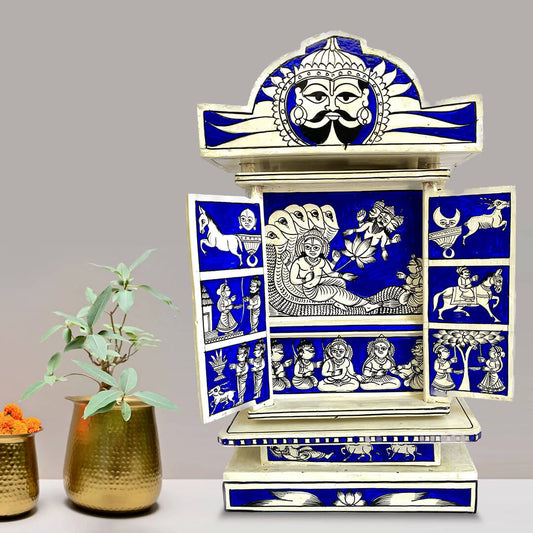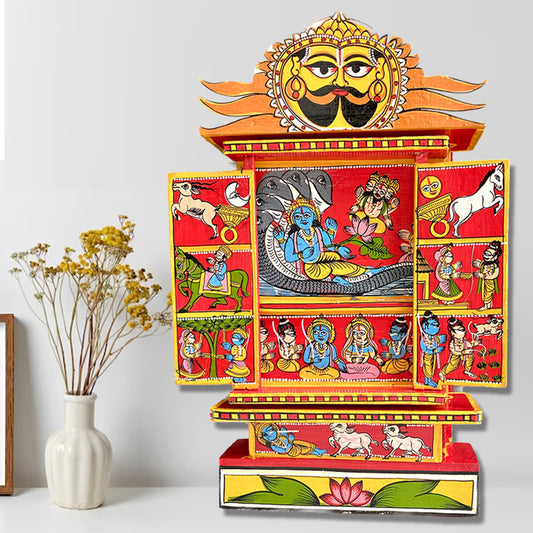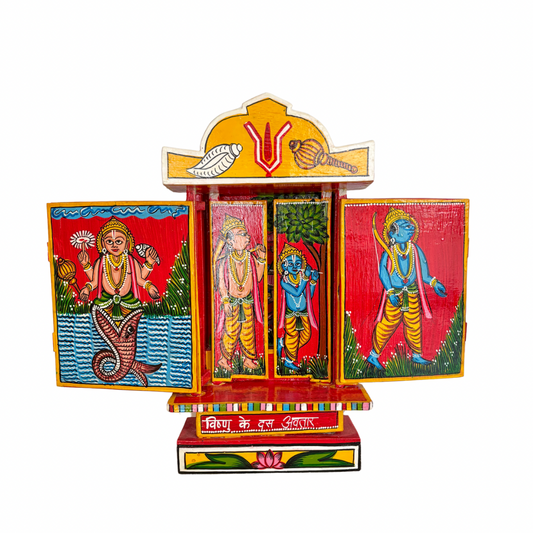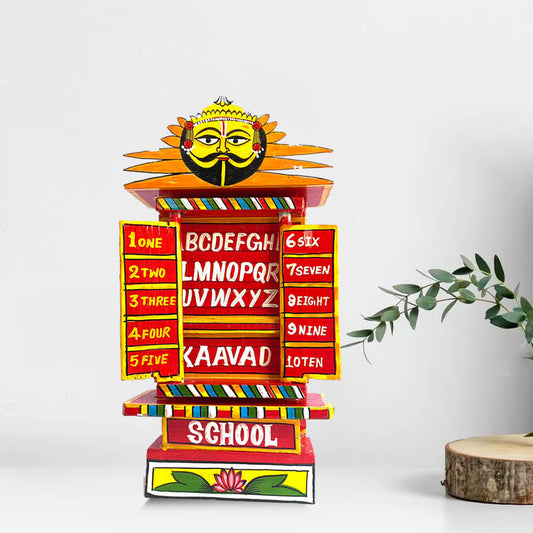What is Kavad Art?
Kavad art is a traditional storytelling craft from Rajasthan, where beautifully painted wooden shrines, known as Kavad, are used to narrate mythological tales, folklore, and family histories. These portable storytelling boxes unfold like a book, with each panel revealing a new part of the story. This unique art form blends visual storytelling, oral tradition, and craftsmanship, keeping Rajasthan’s cultural heritage alive.
The Kavad art of Rajasthan is deeply rooted in religious and folk traditions, showcasing stories from the Ramayana, Mahabharata, Krishna Leela, and local legends. The paintings are vibrant, detailed, and expressive, capturing movement and emotions in a stylized yet dramatic manner.
History of Kavad Art
The origins of Kavad date back several centuries, with its roots in Rajasthan’s oral storytelling traditions. Traveling storytellers, known as Kavadia Bhats, would visit villages, carrying their Kavad shrines and narrating sacred stories to audiences. This art was passed down through generations, mainly among the Suthar community in Mewar, who specialized in carving and painting these intricate storytelling boxes.
The Legend Behind Kavad
According to legend, the name Kavad comes from “Kavadh,” meaning a sacred pilgrimage. It is believed that the first Kavad was crafted by Vishwakarma, the divine architect, making it a mobile temple for those who couldn’t travel to distant pilgrimage sites. The tradition of Kasth Kala (woodcraft) played a major role in shaping Kavad painting, turning it into both an artistic and spiritual medium.
How is Kavad Made?
The making of Kavad involves Kasth Kala (woodcraft) and painting, combining the skills of carpenters and painters.
- Material: Traditionally, mango or neem wood is used to create the structure.
- Painting: The wooden panels are painted with natural pigments, using reds, blues, yellows, and greens, often highlighted with gold.
- Structure: A Kavad has multiple doors and panels that open in sequence, revealing different parts of the story.
The Kavad painting is detailed and narrative, ensuring that each character and scene is depicted clearly for storytelling.
Cultural and Spiritual Importance of Kavad Art
Kavad art is more than just an art form—it is a living tradition that bridges generations. Rooted in Rajasthan’s vibrant storytelling heritage, Kavad is used to narrate tales from mythology, folklore, and even family histories. These wooden storytelling boxes unfold panels one by one, each revealing a scene, making it a dynamic and interactive art form.
At Sumaavi, we believe in preserving such traditions alongside other beautiful forms of rajasthani folk art. We proudly promote unique styles such as phad painting and miniature painting, each with its own deep cultural roots.
Our range of Block Printed Fabrics Online reflects the same attention to detail and storytelling through design. You can explore everyday elegance with Hand Block Print Bedsheets or create cozy corners with Block Print Rugs.
For ethnic fashion lovers, our Hand Block Printed Sarees bring wearable tradition to life. Elevate dining with a Hand Block Printed Table Runnner, Block Printed Dining Mats, and Block Printed Cushion Covers.
Complete your home decor with Block Printed Sofa Throws, or explore our serene Birds On Canvas collection. Keeping Kavad art alive means preserving stories, emotions, and cultural identity for the future.


